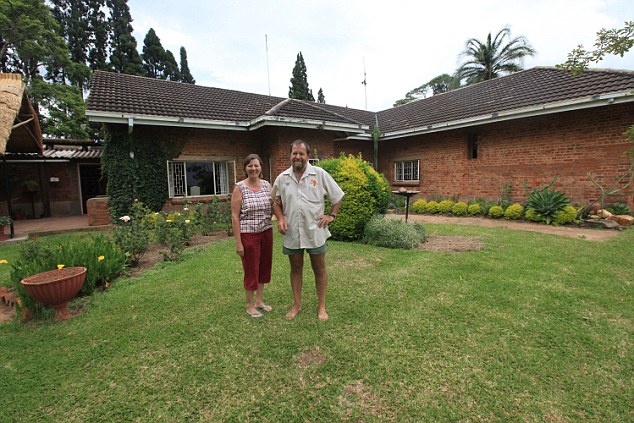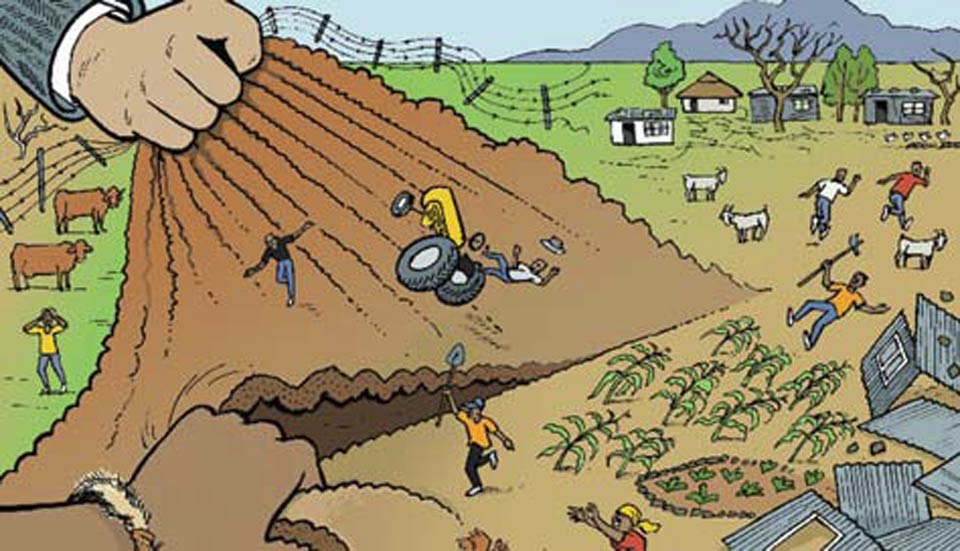In relation to the turnover of agricultural land, the land redistribution fund is important. During its formation, a special role was played by collective farms and state farms, as well as by farmers, peasants, and personal subsidiary plots. This opportunity was provided thanks to the Law of the RSFSR "On Land Reform" No. 374.1. The process continued through the adoption of the Land Code, as well as the Law on the Turnover of Agricultural Land No. 101-FZ.
The concept
A foundation is a state structure, which is a base where accurate cadastral and registration data are indicated. Article 80 of the Land Code of the Russian Federation is dedicated to him. The law provides for certain grounds for withdrawing allotments in assets, as well as other ways of forming a fund. The main task of this structure is to preserve and reorganize agricultural land.
The law does not establish an order that obliges the entire composition of the fund to be reported. In addition, state and municipal authorities may not provide the exact boundaries and location of allotments, except as required by law. Authorized structures must dispose of the relevant assets, as well as periodically conduct an inventory, update existing data.

Benefits of Reform
In practice, the formation of a land redistribution fund has become important. This was shown by statistics. The main goal of the reform was to form a farm and a peasant farm by massively leaving owners of land shares from common ownership to separate plots by allocating them in kind.
Since the beginning of 1995, nearly 300 households have passed registration of land ownership. Of these, about a third was formed on the former territories of collective farms and state farms. But about two-thirds of the plots are allocated from the land redistribution fund. At the same time, from the beginning of the reform, people began to create gardening, summer cottage, horticultural partnerships and other associations. By the mid-2000s, there were already over eighty thousand of them.
Sources of Creation
When the Land Code had not yet entered into force, the formation of the land redistribution fund was carried out in accordance with the decision of the Presidium of the Supreme Soviet of the RSFSR and the Council of Ministers No. 891-1. In accordance with this act, approximately 10% of the land was withdrawn from collective and state farms for contribution to the fund. From it it was planned to provide allotments for mowing hay and other needs of peasant farms.
Another source was the surplus of allotments that arose as a result of the formation of common property during the privatization of the territories of collective and state farms and their reorganization. Registration of rights was supposed to end before 1993.
Another source of formation of the fund for the redistribution of agricultural land was forest allotments that were not occupied by plantations, as well as reserve territories.

Privatization
To this end, appropriate commissions were formed within the districts, as well as in the state farms and collective farms themselves. They were vested with powers to reorganize and privatize farms.
The team needed to solve the following issues:
- On the form of ownership.
- On the rules for writing an application for a plot, as well as redemption or lease of land in excess of the established norm. Subjects who could receive allotments for free should be identified.
- On the determination of the entire area related to common property
The norm of land, which is provided on average for the district, was determined by dividing the total area of agricultural enterprises by the number of citizens involved in agriculture, as well as those who previously engaged in relevant activities. The latter included pensioners, social workers and other citizens. Local authorities have the right to independently choose a differentiated rate of transfer of allotments to property at no cost, since this depends on the density of the population in certain areas. In this regard, the norms were significantly different.

Termination of Rights
The redistribution fund of lands or land plots was replenished due to lands that ceased to be property in connection with the conditions provided for in art. 39 and Art. 40 of the Land Code, adopted in 1991. In particular, they say:
- voluntary renunciation of land;
- expiration of the relevant period;
- termination of the organization;
- operation allotment for other purposes;
- misuse;
- periodic non-payment of the fee for 2 years and debt until the end of next year;
- non-use of land during the year;
- alienation in favor of local authorities.
Soon, in 1993, these grounds became invalid.
Change of law
The legal regime has changed in connection with the entry into force of the new Land Code, as well as Law No. 101-FZ. Initially, 3 methods were proposed for appointing a land redistribution fund. This is stated in paragraph 2 of Art. 80, namely:
- voluntary refusal;
- transfer of land to the state if there are no heirs;
- compulsory exemptions in cases provided by law.
Then Art. 80 of the RF Labor Code was supplemented by an indication of inclusion in the fund of territories on the basis of Presidential Decree No. 323 of 1991.
Many experts agree that the new edition should be clarified. The foundation of the foundation was connected with the execution of acts on land reform. At the same time, most of the plots did not affect privatization.

What is the situation today?
The fund includes plots that have not been previously used or received by government bodies during the transaction. According to the current Land Code, it includes the following territories:
- If there is no entity who is going to acquire an allotment for use in agriculture, then the municipality buys it at market value.
- If the allotment belonging to a foreigner is alienated to legal entities, including those whose authorized capital is more than 50% of the contributions of foreigners or stateless persons.
- If land is sold, the area of which is over the established size per person.
- If the land is abandoned voluntarily. Then it becomes ownerless and passes into the ownership of the state or municipality.
One way or another, the municipality has the preemptive right to purchase land.

Mode
State ownership is not demarcated by the fund. The disposal and management of reserve lands is carried out by local authorities. Allotments can be leased, transferred to the property (on a paid or free basis) to legal entities and individuals in certain cases.
The authorities in the regions can independently establish the boundaries of agricultural land, transfer to the local authorities one or another authority in the field of land relations. They also have the right to establish:
- individuals who are entitled to allotments of the fund;
- list of land transferred to ownership or lease;
- size of plots;
- fund area within the municipality;
- conditions for granting allotments that are in municipal ownership;
- rules for making proposals regarding the fund.
Land application
Article 78 of the Land Code specifies the procedure for the right to use land, which are allocated from the corresponding fund.Allotments that have fallen out of circulation temporarily are transferred:
- for farming;
- planting strips for protection;
- the implementation of educational, research and other activities;
- fishing
- agricultural needs for the period of construction of power lines, roads or pipe laying;
- hunting.
Subjects
The following persons can receive allotments:
- partnerships and associations for housekeeping, individuals;
- MUP and PMU;
- production and consumer cooperatives;
- enterprises of commercial and non-commercial use;
- religious organizations;
- educational, industrial, experimental units involved in the training of personnel;
- communities of northern Siberian and Far Eastern peoples;
- Cossack society.
To get land, you should contact the local authorities that are involved in regulatory regulation in the field of land relations.

Earth Information
According to Art. 80 of the Land Code, relevant information is indicated in open access sources. Local authorities notify all persons interested in the issue, as well as publish information about the lands that come into the fund.
Communities, associations, citizens, and other persons stipulated by law may apply to local authorities with a request to transfer the allotment for free use. Farms and enterprises may apply for the purchase of additional plots. The question of how much land costs, the authorities decide based on its market value.
Project
The project is being prepared with the aim of streamlining the use of these lands by legal entities and individuals, as well as for a more successful procedure for the formation of land plots. To create it, legal, technical and economic documentation is used. Calculations, description and project plans are made. Each action needs to be justified. The plan consists of the following steps:
- Preliminary work.
- Development.
- Matching.
- Statement.
- Education land management.
- Transfer to the customer with a copy sent to government agencies.
The project is coordinated with local authorities, cadastral services and other state structures.
What else do you need to know?
Local authorities authorized to deal with this issue should not only provide information on the presence or absence of allotments in the fund, but also provide information on how much land is worth, a full description of a particular plot. The decision on the allocation of the allotment is taken individually. Local authorities have the right to request the justification of the allotment of land from the applicants.

Conclusion
The fund includes agricultural land, which are used for subsequent development. The sources of the formation of the fund at different times differed. One way or another, in the formation of new lands and the streamlining of the application of the former, as well as the transfer of allotments to ownership and use, a certain procedure is provided. For example, the preliminary project during the formation of the allotment is coordinated with the local authorities and the owners of the territory, and the transfer of land can only be carried out in favor of the persons specified in the law.
